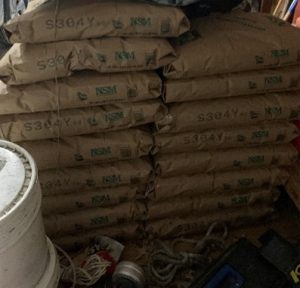By: Scott Hutchins and Elizabeth Hill
Pollinators are a vital part of the agricultural production landscape and USDA plays a critical role in monitoring pollinator health and ensuring they thrive. Our efforts are extensive, but focus primarily on factors that influence pollinator health, crop production, and conservation. Ultimately, USDA exists to ensure Americans have access to a variety of fruits, nuts, and vegetables needed to support a healthy diet.
Efforts to support pollinator efforts can be seen across an array of Department of Agriculture programs. In all, 14 USDA offices and agencies contribute substantially to pollinator initiatives. It’s easy to imagine that synchronizing actions across so many offices and agencies in a Department employing more than 100,000 people can be challenging.
We know the stakes are high from an economic perspective alone, with USDA estimates for annual production of honey bee products valued at $700 million. More than 100 U.S. crops, with an annual production value of $18 billion depend at least in part on pollinators – not including the 40 crops that rely on pollinators for seed production. Given the breadth and critical importance of pollinator-related activities happening at USDA, Congress recognized the need for enhanced honey bee and pollinator activity coordination, as outlined in the 2018 Farm Bill. During the Trump administration, USDA created a coordinator position within USDA’s Office of the Chief Scientist to work across USDA to help ensure that research, extension, education, and economic activities related to pollinators are done in a focused and harmonious way. USDA’s pollinator coordinator aims to integrate the input and needs across USDA offices to aid in establishing annual pollinator strategic goals and research priorities.
So, what does this all mean? For starters, USDA has never had cross-cutting coordination working across every office and agency with the pollinator portfolio. The impact from simply creating opportunities for pollinator-centric employees to come together has had major payoff in and of itself. Offices that typically work solely on pollinator policy now have a way to easily connect with research-oriented offices, and vice versa – information that is of interest to multiple offices is being shared more quickly and easily. This may not seem intuitive, but with 14 offices, multiple sister federal agencies, and dozens of outside stakeholder groups with an interest in pollinators, having a hub to connect, coordinate, and share information quickly and easily across each of these nodes is critical to successfully addressing pollinator health. That means valuable information makes it to our customers and stakeholders more quickly.
But taking things to the next level – that is, developing these new relationships to work cohesively as a unified team in establishing Department-wide pollinator strategies – has been an extraordinary effort and success. To date, we have over 60 federal employees that are working together on strategic planning. They share a collective vision and common goals to help the greater public good. We have also made concerted efforts to engage and garner contributions and ideas from more than 100 external stakeholders in the managed honey bee, research and crop production realms. USDA is using this information to help shape its priorities for 2021 and onward. We plan to disseminate information on approximately 15 research priorities in the coming months. These priorities will be shared with funders of pollinator research, researchers, and the general public – including beekeepers such as yourselves.
More details to come, but to keep abreast of ongoing efforts and other pollinator initiatives taking shape at USDA, visit our new pollinator landing page: https://www.usda.gov/pollinators.








